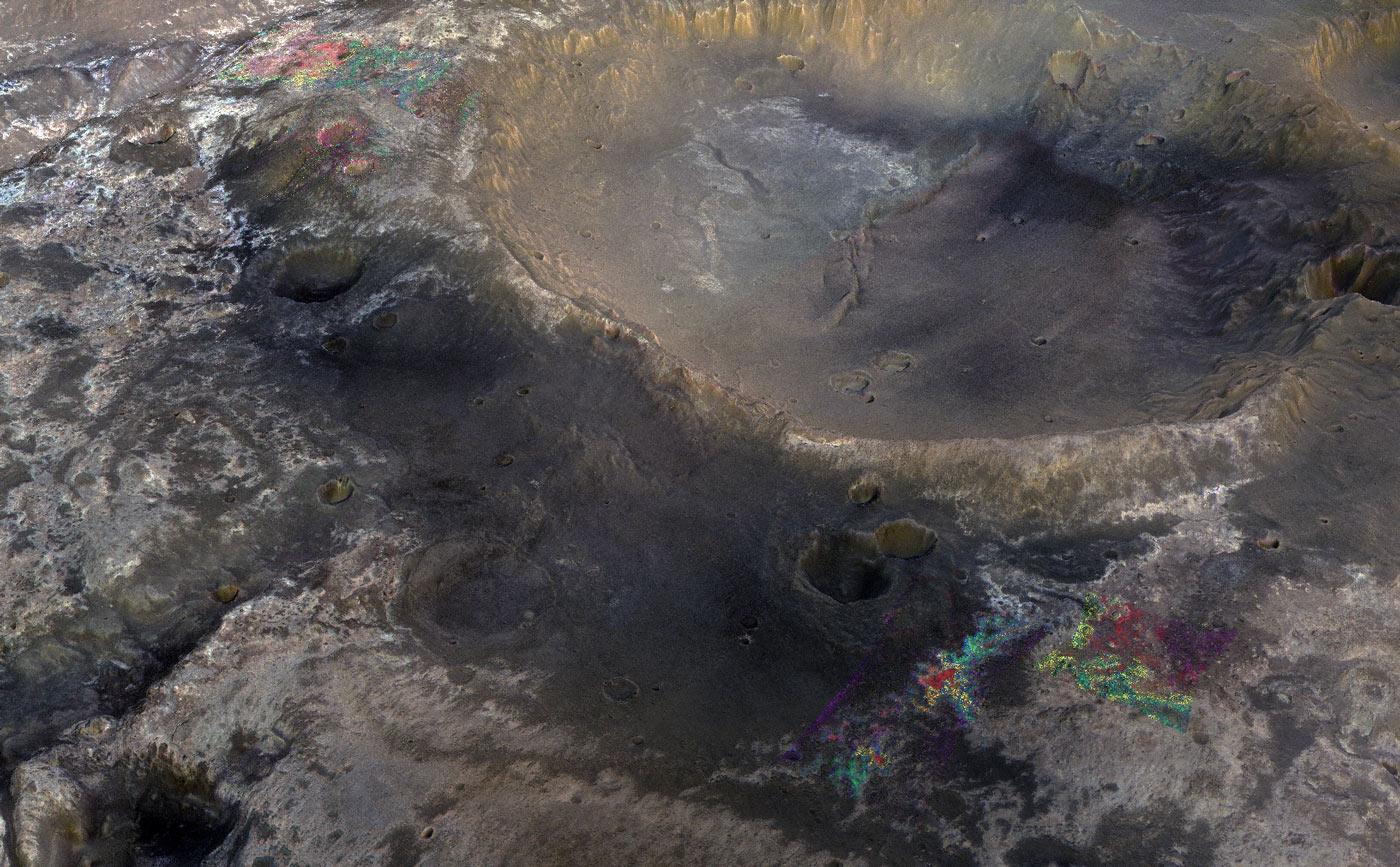
In Arizona's badlands, not far from the Grand Canyon and located mostly within the Petrified Forest National Park, lies the Painted Desert. Different types of rock, including siltstone, mudstone and shale, characterize the stratified layers (known as horizons in geologic terms) of the Painted Desert. Each horizon is a beautiful shade of red, orange, beige, or purple. A new research paper recently published in Icarus shows a similarly stratified region of Mawrth Vallis, one of the oldest valleys on Mars.
A team of researchers led by Janice Bishop of the SETI Institute has analyzed data from the Mars Reconnaissance Orbiter and Mars Express, combining images from the CRISM, HiRISE, and HRSC instruments, and made some exciting discoveries:
- There are five distinct horizons, some as thick as 200 meters and others as thin as 10-20 meters. Each horizon was formed at a different time and under aqueous conditions.
- Changing chemistry and water conditions in the environment caused these different minerals to form in each horizon.
- Improved image calibrations reveal tiny salty outcrops between two of the horizons, suggesting that water evaporated and reappeared to concentrate salts in this unit between clay horizons.
We are excited to discover how dynamic the ancient environment was at Mawrth Vallis,” said Bishop, lead author of the paper. “The transitions from ferric to ferrous iron and from neutral clays to salty sulfates imply changing water chemistry that on Earth are found together with microbial life.
While it’s unknown specifically what caused the changing chemistry in the ancient martian environment over time, it poses some possibilities for habitability. For example, was the changing environment caused by release of cations and anions from dissolution of rock, producing, an energy source that could have potentially been used by microbial life? And conversely, is it possible that microbial life itself was responsible for the chemical changes in the environment? In some salty terrestrial analog sites, including the Painted Desert, along with Western Australia and the Atacama Desert in Chile, microbial life has distinctive impacts on those areas' chemistry and geology.
While we don't know the answers to these questions with regard to Mars, no doubt, additional research and exploration will yield more clues about the dynamic nature of the ancient Martian environment and climate.
You can learn more by reading the full paper here.





